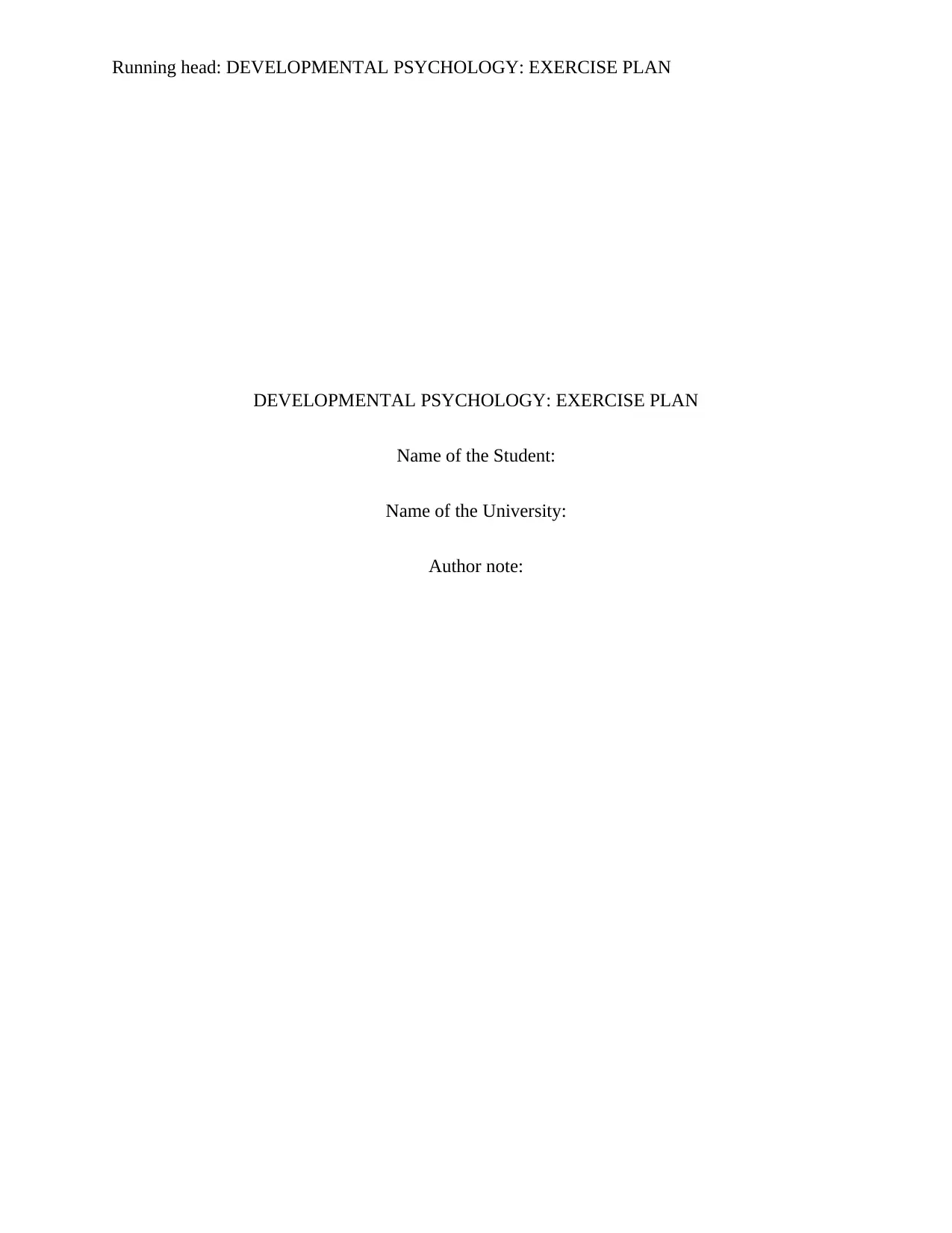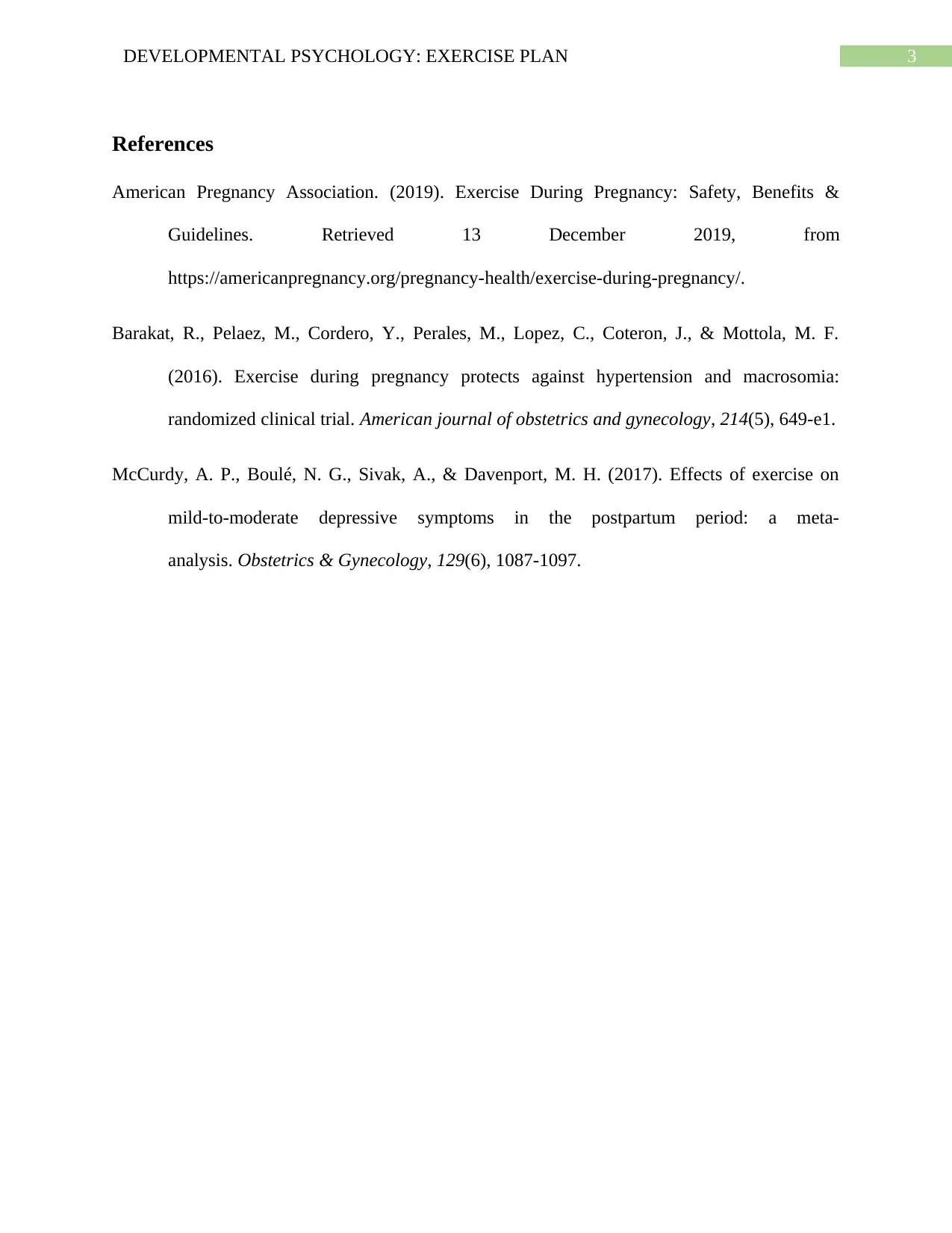Developmental Psychology Project: Exercise Plan for Pregnant Women
VerifiedAdded on 2022/09/09
|4
|597
|20
Project
AI Summary
This project, prepared by a student for a developmental psychology course, presents an exercise plan designed for both 6-month pregnant and postpartum women. The assignment begins with an introduction that frames the student as a developmental psychologist providing advice. The core of the project is the creation of two daily activity lists, one for the prenatal period (6 months of pregnancy) and another for the postpartum period. Each list includes specific exercises, the number of sets and repetitions, and a recommended time frame. The prenatal list includes activities such as brisk walking, yoga, low-impact aerobics, and pelvic tilts, while the postpartum list features abdominal contractions with deep breathing, walking, and cycling. Crucially, the assignment provides detailed explanations for each exercise, linking them to developmental theory and the positive impact on infant health and development. The explanations highlight how these exercises improve circulation, regulate blood pressure, reduce back pain, assist in delivery, and promote the mother's overall well-being, thereby contributing to the healthy development of the infant. The assignment adheres to APA guidelines and includes a references section. This assignment is available on Desklib, a platform offering past papers and solved assignments for students.
1 out of 4





![[object Object]](/_next/static/media/star-bottom.7253800d.svg)